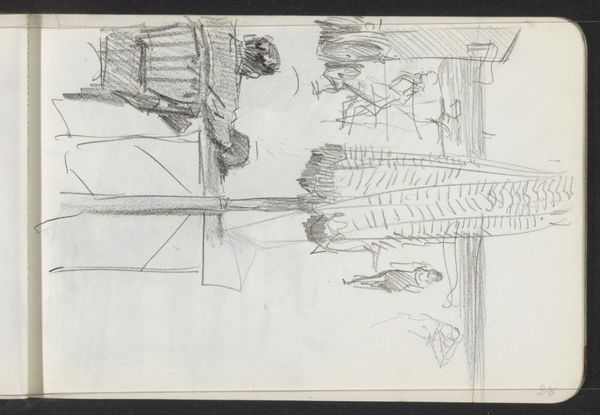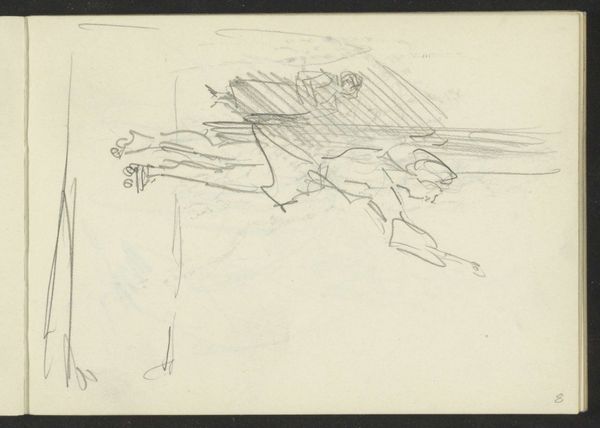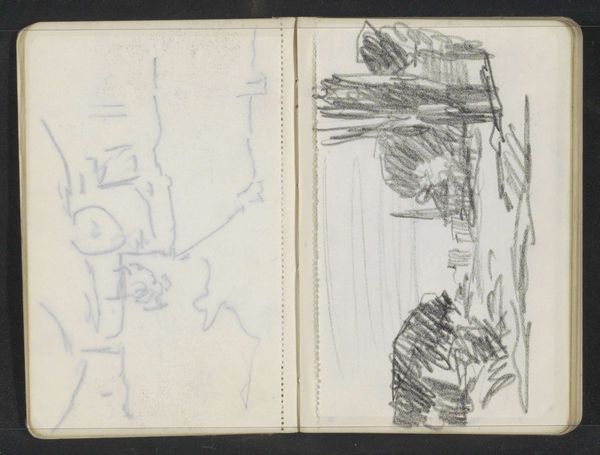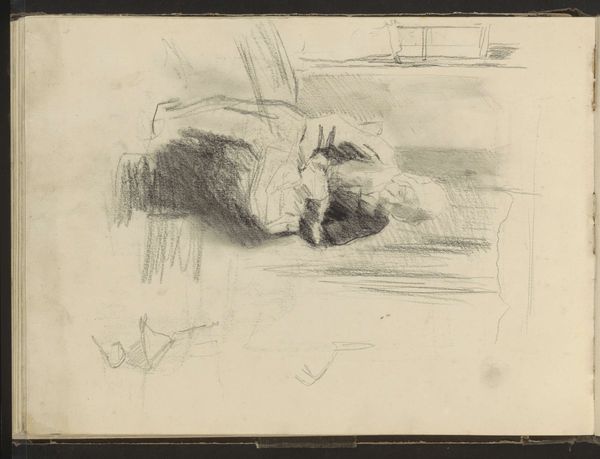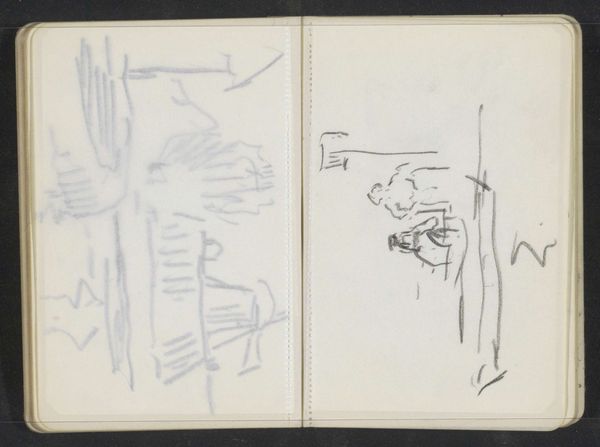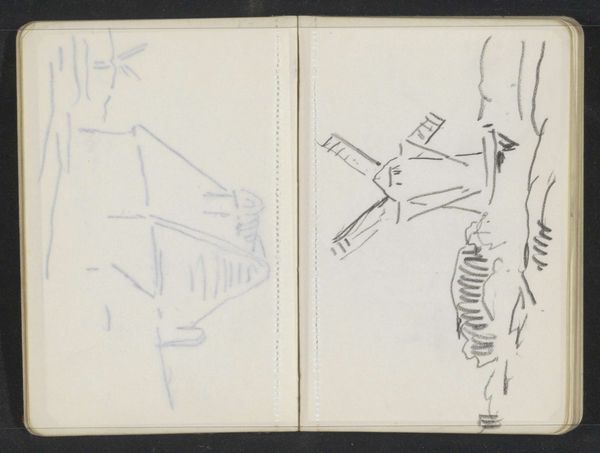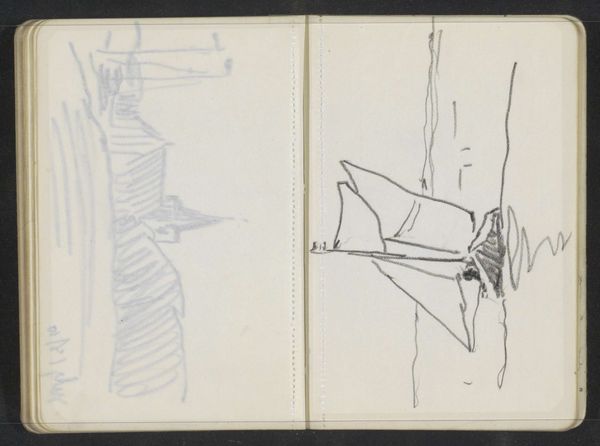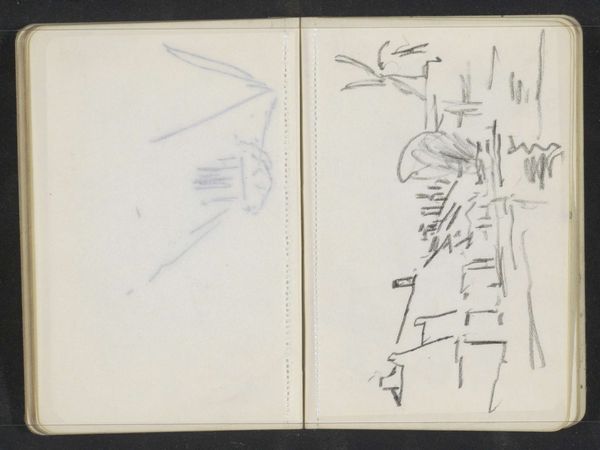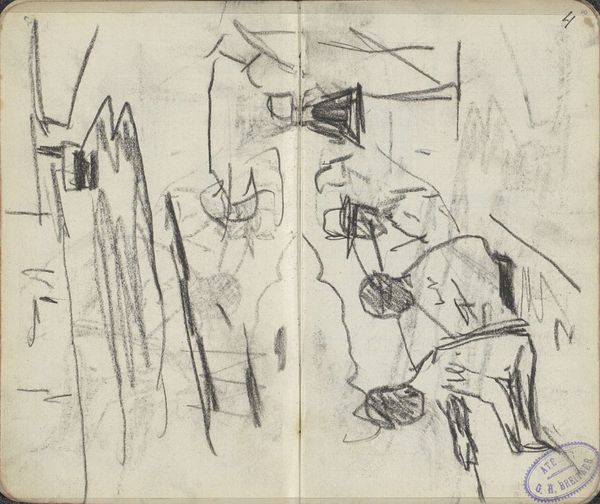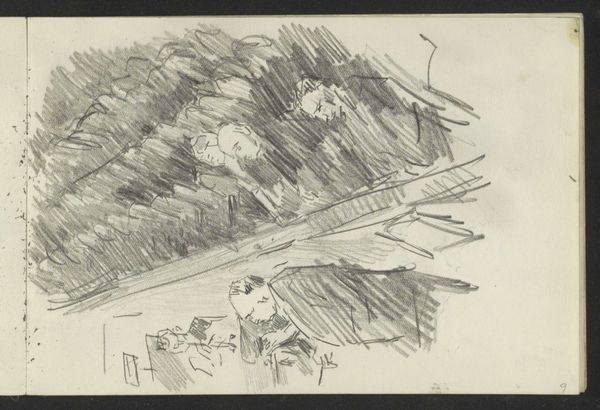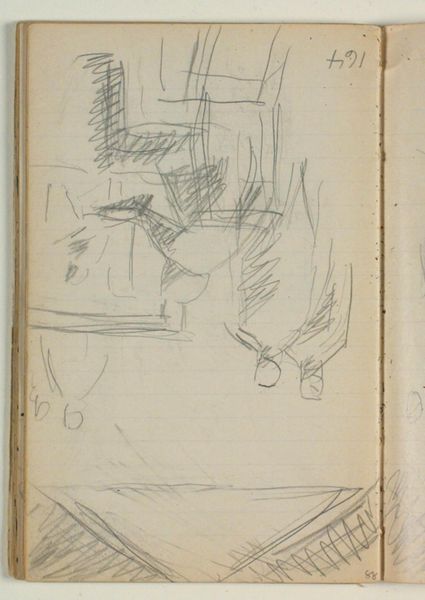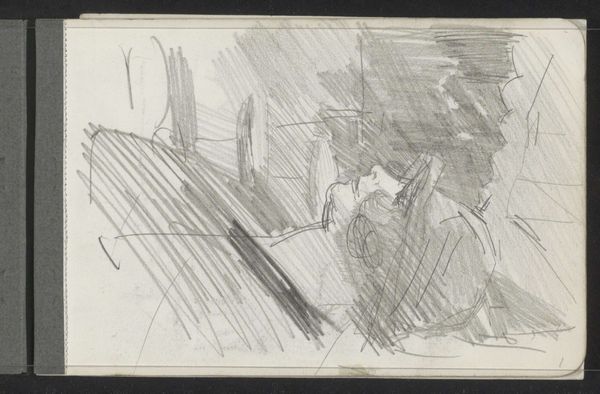
Copyright: Rijks Museum: Open Domain
Editor: This is "Leeg terras en twee rennende figuren," which translates to Empty Terrace and Two Running Figures. It’s a pencil drawing by Isaac Israels, likely created sometime between 1875 and 1934. The hurried sketchiness really captures a sense of fleeting movement. What do you make of it? Curator: I see a window into the evolving role of public space in the late 19th and early 20th centuries. Israels, by choosing such a mundane scene and rendering it so spontaneously, rejects the traditionally grand depictions of public life. Who were these figures, and where were they running to? Editor: That’s interesting. I hadn't considered it in terms of societal changes. I was more focused on the composition. Curator: Exactly, the composition, though seemingly casual, reveals a conscious effort to democratize art. By presenting such everyday figures, Israels is placing importance on the lives and movements of ordinary people. Consider how this challenges the established art institutions and their patrons. How does this sketch reflect the broader social movements of the time? Editor: I suppose by choosing a contemporary, less formal subject, it could be seen as pushing back against the rigid expectations of the art world. Like, maybe trying to make art more accessible? Curator: Precisely! And it begs the question: for whom was this art intended? Israels' impressionistic style makes this drawing immediate. Were these sketches done for larger projects, or could they also represent something more individual or democratic? Editor: I never considered how the seemingly simple style could be making a larger comment on social norms. That's really given me something to think about! Curator: Indeed, by exploring the relationship between art, social change, and accessibility, we gain a richer understanding of not just the work, but also the time in which it was made.
Comments
No comments
Be the first to comment and join the conversation on the ultimate creative platform.
